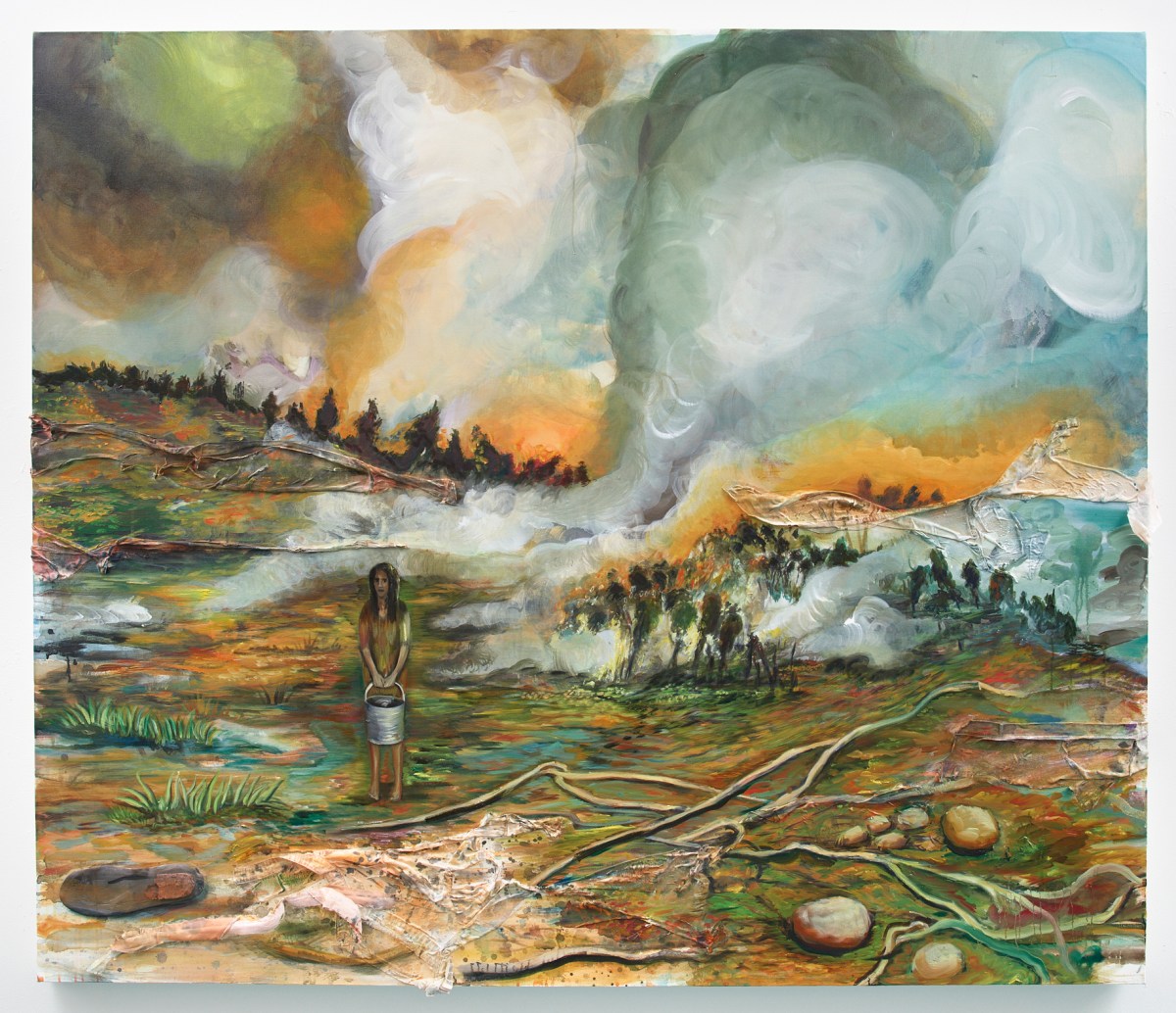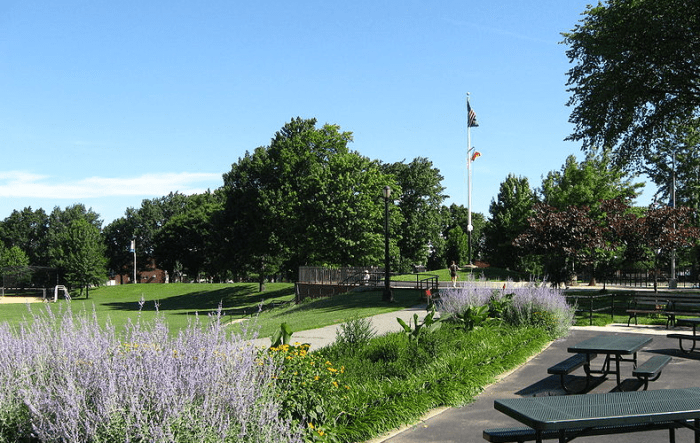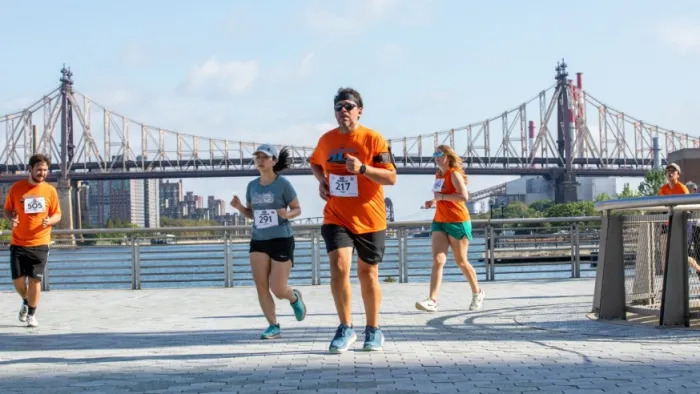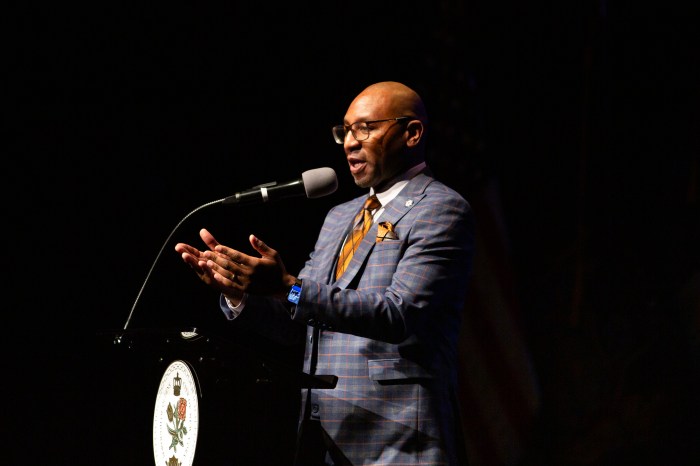Filmed on location in New York City, each docu-style crime-drama episode of the once-popular, noir TV series “Naked City” (1958–1963), ended with a narrator uttering that iconic line: “There are 8 million stories in the naked city. This has been one of them.”
Fast forward to the present and one can now say that there are 8.3 million or so New York City stories, each with a pandemic experience behind it. And Jackson Heights artist/educator Deborah Wasserman’s journey happens to be one of them.
The mother of two teenage girls who is known for her vibrant artwork — her favorite mediums are ink, acrylic and oil on paper and canvas — as well as her offbeat, avant-garde performance art across Queens has remained extremely involved and active in her own beloved community and beyond, even helping folks during the height of the pandemic.
“In March 2020 — around the time of the first lockdown — I realized, like many of my fellow New Yorkers, that my life was going to be completely transformed for quite a while,” Wasserman told QNS. “Before the pandemic, I was a very busy bee, running my local arts program ART FOR A START, teaching at a senior center in Forest Hills through a Su-Casa grant from Queens Council on the Arts (QCA), painting at my studio in Woodside, and even finding time to attend fitness and Zumba classes at the local Urzua Studios.”
Initially, the artist thought 2020 would be a good year. She received a New Work Grant from QCA and was excited to create an exciting body of work, which she shared with her local community. But looking back, she wondered, “Who knew then, that so many of my plans would shut down, change and alter direction?”

The family moved here from Williamsburg, Brooklyn, in 2009, when Queens’ art scene was coming into its own.
“We could no longer afford Brooklyn and were drawn to Queens’ diversity, the Latin music scene and the beautiful architecture in historical Jackson Heights,” Wasserman said. “Upon moving here, I saw the need for affordable art studios, an art program for youth, and even fitness classes. So, I utilized my entrepreneurial skills to create and bring these services to a community which I cherish and adore.”
Wasserman’s husband Phil Ballman, who is director of cultural affairs and tourism at the Queens borough president’s office, has been involved with music and cultural programming such as summer concerts and the Queens Drive-In series, which takes place on the grounds of the New York Hall of Science in Flushing Meadows Corona Park.
The journey
“Living just a few blocks away from Elmhurst Hospital, our pandemic experience as a family was colored by the fact that we live in the ‘epicenter of the epicenter.’ But the atmosphere inside our home was that of safety and relative calm,” Wasserman said.
As soon as the schools were shut down, her girls (now ages 15 and 14) who were attending BSGE [The Baccalaureate School for Global Education] in Astoria, moved to online schooling and her husband started working from home. She remembered that many of her neighbors were getting sick and the community “was very challenged.” The family heard ambulances, sirens and even helicopters, and there was a great sense of panic in the air, according to Wasserman. They would see hospital staff in uniforms walking down the streets, and refrigerated trucks lined up next to the hospital.
During that time, Wasserman volunteered for an organization called COVID Care Neighbor Network, a program of the nonprofit Together We Can. During her time volunteering, she’d make phone calls to local families and organized help with food donations.
“Speaking to these families during the lockdown — most of them without resources, health insurance or income — put my personal pandemic experience in proportion,” she said. “I was, and still am, very fortunate.”
Working as an arts educator for NYC’s prominent museums, a few years ago, she said she was sad to see that throughout the pandemic, museums were furloughing or letting go of so many staff members.
“So, I also felt fortunate to have been running my own arts program,” Wasserman told QNS. “I instructed students via Zoom and enrolled financially challenged families for free.”
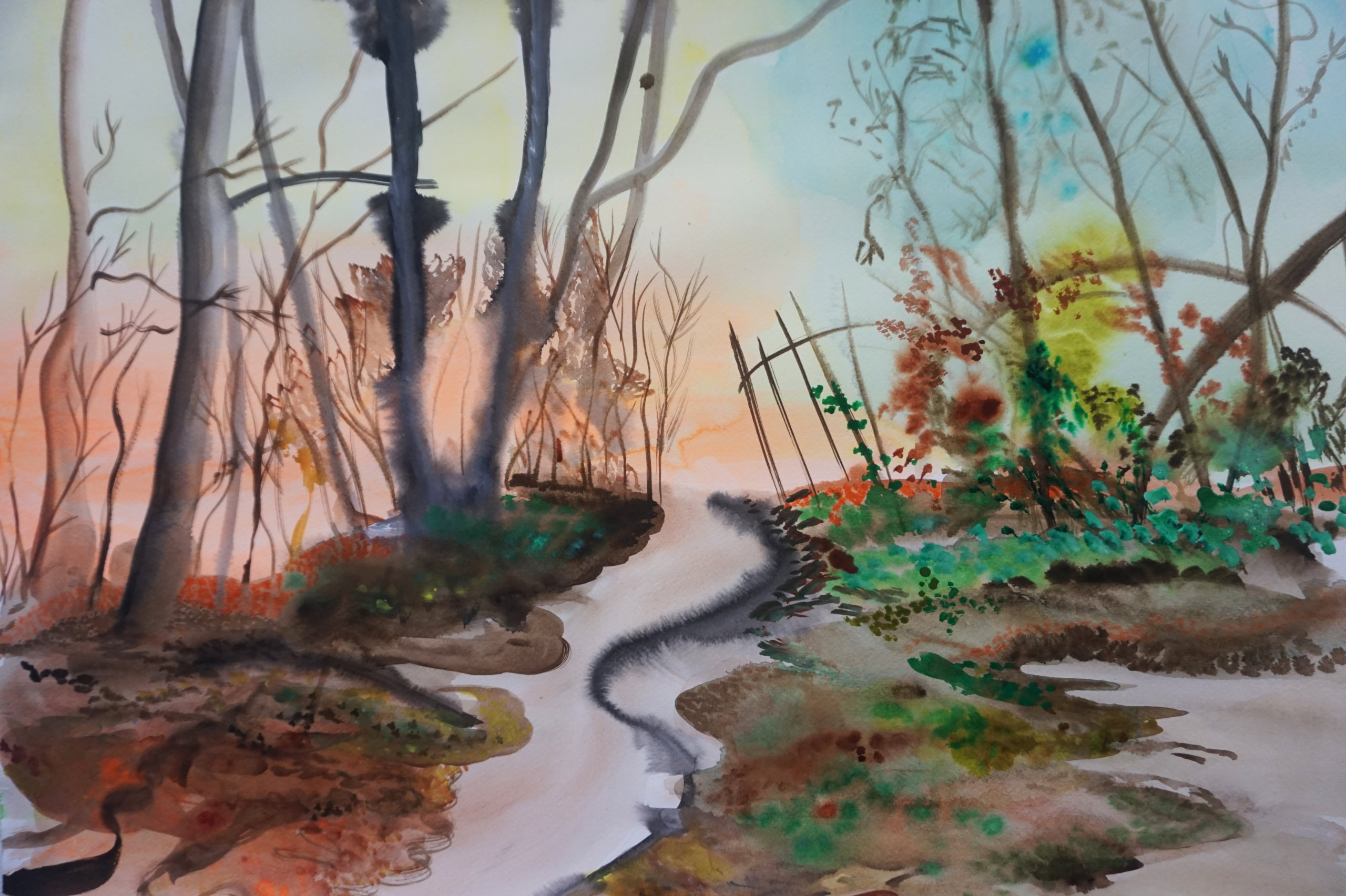
Indeed, there are millions of stories out there! And so many different perspectives on the crisis, as each New Yorker learned how to cope with their new reality.
“This past year, I rode my bike to my studio every day, even in the harshest of the lockdowns when the streets were practically empty, or the snow was piled up high. I needed to be out, get out of the house and feel somehow free,” Wasserman remembered. “My studio felt like an oasis of safety, somehow secluded from this turbulent world. As an artist, I already have a hermit personality, and since childhood, I’m used to spending hours by myself, creatively inspired. This solitary time was blissful for me because I was able to channel much of my anxiety, worry and fear into new bodies of work, and the whole process kept me sane. I also returned to my meditation practice, which became absolutely essential; during intense moments of panic, I was calming myself down with breathing and positive affirmations.”
“Many people wonder what an artist does at the studio or how their days look like? For me, creating a painting is a multi-step process,” she added. “I work intuitively and spontaneously, applying many techniques of spilling paint, various expressive brushstrokes, using imagery, painting on the floor and the walls. I also used bunched and stained cloth as an element in my work to invoke the human body, women’s labor, and create an additional textural quality. About a decade ago, I started exploring certain themes in my work, and many of them stem from contemplations about the relationship between humanity and nature, the destruction of natural resources, and the need to reconnect with Mother Earth.”
In honor of Women’s History month, Wasserman’s work was included in a group show on the prestigious art site, Artsy. During this past year, she was also featured in other virtual group shows: Artist/Mother Podcast (working artists/moms share experiences), and Visionary Arts Collective. In addition, she became a New York Film Academy (NYFA) finalist in the category of printmaking/drawing/book art.
With a New Work grant from QCA, Wasserman recently gave a presentation for the Jackson Heights Art Talk, hosted by Queens-based visual artist Linda Ganjian, who creates sculpture and drawings, and has completed public art projects for the MTA.
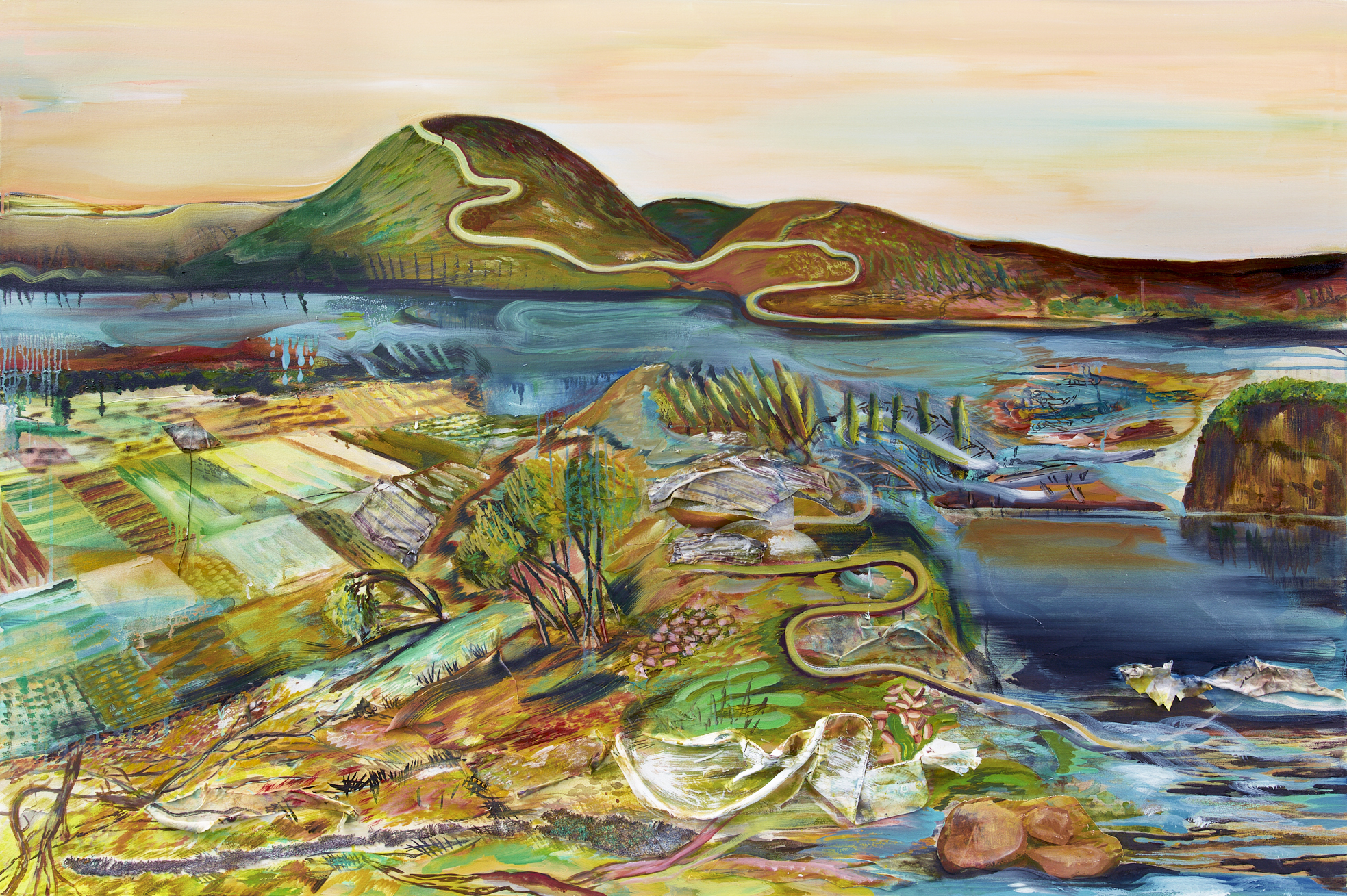
In June, Wasserman will be taking part in Aunt Karen’s Farm residency in central New York, about three-and-a-half hours from New York City. Aunt Karen’s Farm is a multi-disciplinary, multi-generational organization that provides a quiet space for the development of new creative work, and an environmentally sustainable agricultural program, according to Wasserman. Participants include solo artists, families, small companies and educators.
“I know that many parents with small kids had a tough year, juggling jobs with home care. Since my children are old enough to care for themselves, this experience was a lot smoother for us. In fact, in a strange way, this pandemic year simplified life almost at any level: less things to do, slowing down, less activities – and for me, basically, only juggling home, teaching and studio work,” she shared.
“People are stunned when I tell them that I had a good year. They also tell me that it makes them hopeful. I think my year was good because I am naturally accustomed to isolation and quietude, and because I am very contemplative,” Wasserman said. “This year has been a year of soul-searching and reflection, an inner transformation that cannot be described. I feel quite more detached and resilient, in a sense. I confronted the concept of death within myself and it changed my outlook on life. And, I have immense gratitude that I was spared the experience of a death of loved ones. I want to apply myself full-heartedly, not only to my art but also to the upliftment of others.”
For more information, visit deborahwasserman.com or find the artist on Instagram at @deborahwassermanart.

